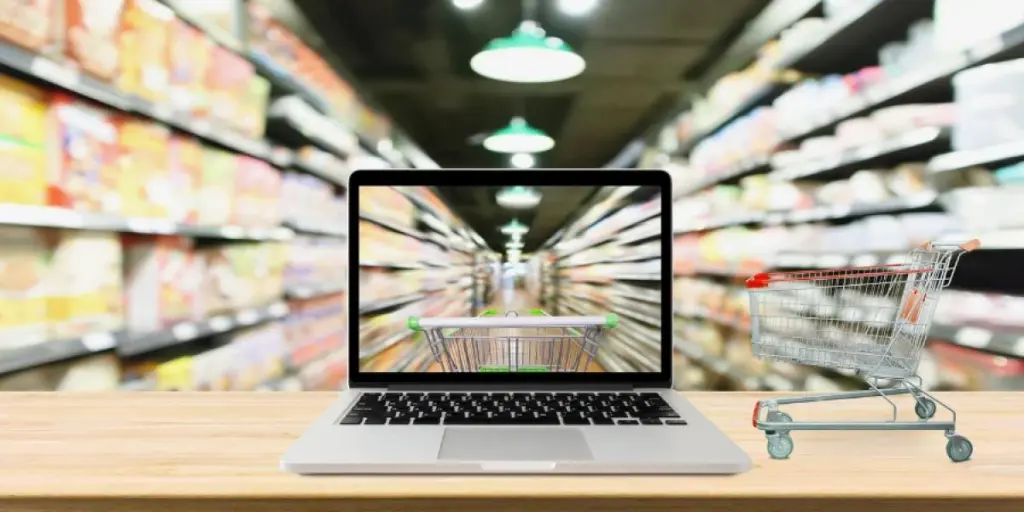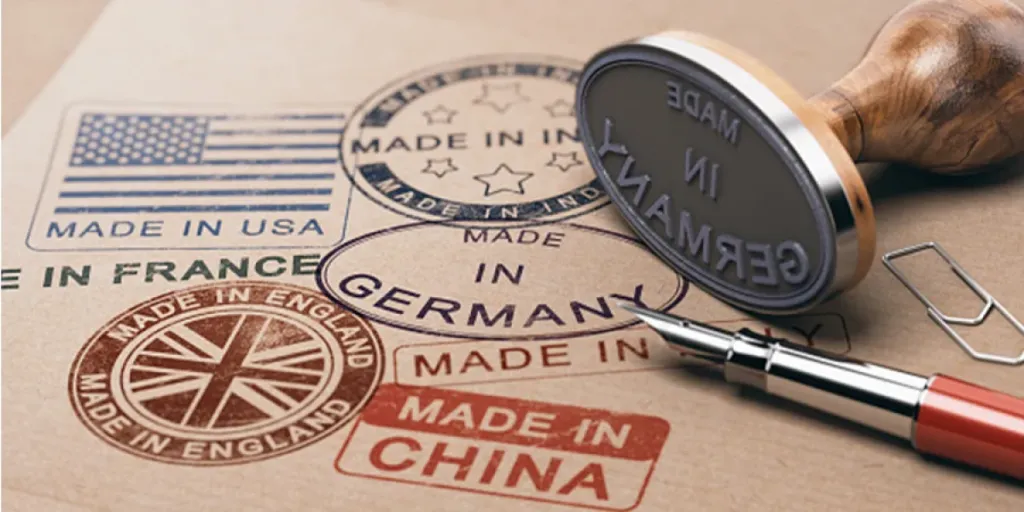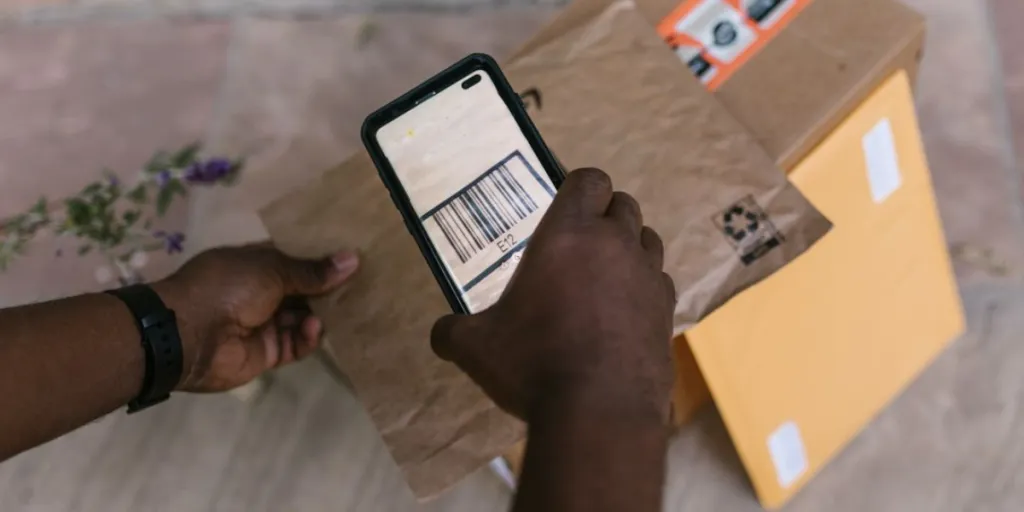What worked in the last few years of ecommerce is not going to work going forward.
That’s what Maurice Prüßner, CEO of ecommerce marketing agency Invisible Brands, says when asked what the ecommerce landscape of 2023 is going to look like.
The old tricks no longer work. “The easy times, with people saying ‘I have some Facebook ads and I get an 8 or 10 ROAS and I’m profitable’ — that time is over,” he says.
Instead, what’s going to work can be summed up in two words: retention marketing.
Recently, Maurice shared on LinkedIn a story of how one of the brands he worked with was able to get €1.1 million in sales during the BFCM period, with nearly €400,000 coming from Omnisend’s campaigns and automations.
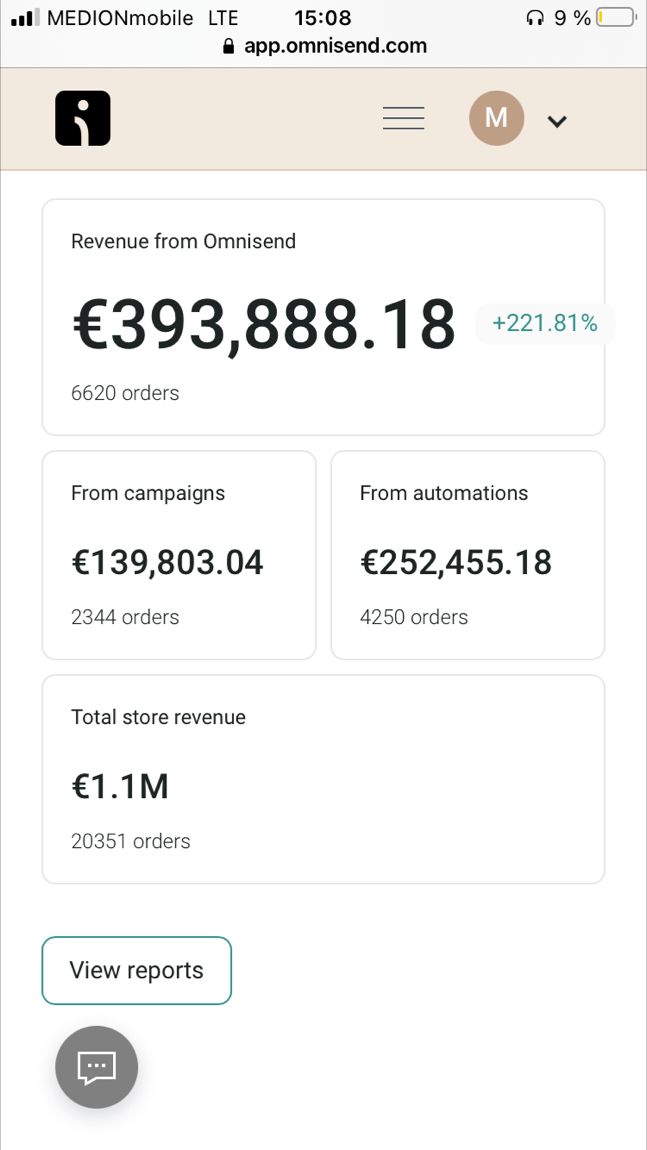
Maurice and Invisible Brands, who are Omnisend Partners, have a unique Tiktok lead strategy that they’re using to bring in millions of euros in sales for their clients.
We talked with Maurice to understand why they’re doing so well — at a time when the macro economic climate is looking gloomy, and brands are struggling to even maintain the same sales as last year.
“Brands not focused on retention marketing…are struggling”
The current environment that ecommerce brands are finding themselves in is becoming less forgiving of mistakes.
The costs of digital advertising have been on a constant rise:
- Meta (Facebook) has increased its CPM prices by 39% year-over-year (YoY)
- CPC at Google has gone up 12% YoY
- Amazon’s CPC has gone up 11% YoY
- TikTok has increased its CPM prices 70% YoY
That, combined with the death of “easy money” and the dawn of “hard money” — high interest rates, reluctant buyers and jittery investors — means that it’s getting much harder and more expensive to consistently acquire new customers.
That’s leading a lot of brands to face a difficult, and potentially fatal, winter.
“We’ve seen here, in Germany, in the market, a lot of brands are now struggling because they have only focused in the last few years on new customers, and not on retention marketing,” Maurice says.
“And now, they’re rushing, asking for email marketing, asking for SMS marketing — and sometimes it’s a little bit too late. Because you’ve left a lot of money on the table, and now it’s too late to pick it up.”
Now, it’s too late to start. You need to have an email list already, an SMS list already.
This focus on acquisition of new customers—which is 25 times more expensive than retaining existing customers—has caused a widening chasm between these acquisition-focused ecommerce brands and those that have been building their email & SMS lists.
“The other competitors are picking up that money—have already picked up that money with their email marketing, their SMS marketing that they’ve been building up over the last few years while [other brands] were focusing only on Facebook ads.”
His advice? Shift your focus to CLV—your customer lifetime value.
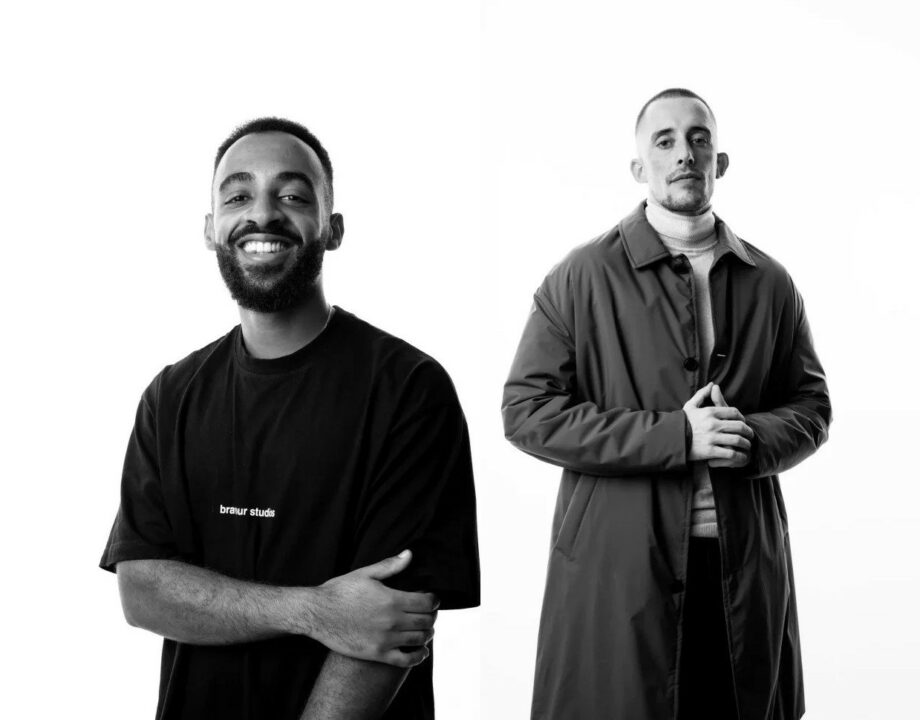
“The only metric that we’re focusing on to make the brands we work with successful is customer lifetime value. Because when your customer lifetime value is $500, you can spend $499 on a new customer, and you’re one dollar in profit. And when your competitor can only give out $200 for a customer, you can outspend him easily.”
“This is only possible with good retention marketing. And for good retention marketing, it’s also important to have good customer service, your good product. You can have the best email marketing, but if your product is poor, no one will buy from you.”
For some brands, unfortunately, Maurice believes that it’s already too late. “Now, it’s too late to start. You need to have an email list already, an SMS list already. “
“You must build trust”
According to Maurice, brands that will succeed in 2023 and beyond need to have:
- A good product
- New products every few months
- Great customer support
- Strong founders that are good at business
- Strong performance marketing
- A focus on retention marketing & CLV
The other missing ingredient is trust.
“The thing that a lot of ecommerce owners don’t understand is that you must build trust. When you have the trust of the customer, you can sell a lot to the customer. Building that trust is about communicating on time, with the information that they need.”
In order to build that trust, Maurice highly recommends Omnisend.
“I always say that every small or medium ecommerce store needs Omnisend. Because I’ve worked with Klaviyo and Mailchimp, and Klaviyo is way too complicated. I need double or triple the time to do anything. And Omnisend is like an iPhone—the whole customer journey is well planned out. It’s intuitive.”
Omnisend is like an iPhone—the whole customer journey is well planned out. It’s intuitive.
A lot of the stores that Invisible Brands works with are in the streetwear industry, and their customers place a lot of emphasis on belong to a community.
“With streetwear, you need to build a community. When you don’t have a community, it just won’t work, because Asos and other big brands are stronger than you and they have a lot more capital to work with. But when you have a strong community, you can make a lot of money.”
“20% of your flows make up 80% of your revenue”
In order to help build that trust, it’s important to communicate consistently and immediately.
This is where the most important workflows come into play.
“For our brands, 20% of the flows make up 80% of the revenue: welcome, abandoned cart, and post-purchase,” Maurice says.
For Invisible Brands, they combine their focus on retention marketing with a high-converting TikTok lead strategy for limited drops. This strategy allowed one of their brands to make more than €175,000 from a single email sent as part of a pre-sale, five days before Back Friday:

The post-purchase flow is especially important for brands who have longer shipping times. For one brand, Invisible Brands sends emails every two days, and a final email that goes out 40 days after the order.
This workflow is not about shipping updates, but rather about the product itself: how to care for the product, some FAQs, and sourcing, to help prepare and excite the customer for the product that they’ll soon get.
That way, when the customer gets the product, they don’t have any further questions. In fact, by then, they’ll have already started building a relationship with the brand.
This focus on retention and loyalty-building has bought the brand great success, with more than €1.4 million in sales in November — with email marketing contributing more than €475,000:
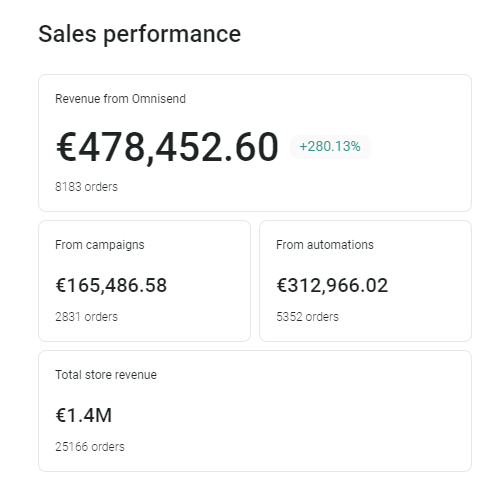
“A good product is not enough”
For 2023, Maurice believes it’s no longer enough to simply have a good product. That’s mostly because good products are no longer unique.
“Many people have good products,” he says. “We can go right now and fly out to China with $20,000-$30,000 and we can make a lot of good products.”
Instead, brands need to ensure that they’ve fine-tuned their entire marketing strategy.
“These types of brands find a good product, and they think they’ll just make an online shop and the traffic will come and they’ll make money. Maybe four or five years ago, you could’ve done that, and had that success. But now, the market is full of experts—full of competition. Guys that are 15 years old, they have a huge YouTube following, they’re making videos, they’re doing $500,000 revenue win no time.”
In order for brands to have a chance at competing in this landscape, Maurice suggests that brands need to have a bigger perspective. This what Invisible Brands looks at when they’re assessing if they can work with an ecommerce brand.
“We look at all their marketing channels, where the performance marketing is found. We’re looking at their Instagram ads, their Facebook ads. We’re looking at how their search marketing is with Google ads.”
Video is increasingly a key part of an online marketing strategy, too, and with multiple tools such as PlayPlay making it easier than ever to create engaging video content with little to no production expertise, brands should be turning to video to generate interest and boost conversions.
But it also goes beyond marketing. For Maurice, a good brand is not only innovative:
“An impressive brand in 2023 is the one that’s bringing a new product every 12 weeks. That way, every 12 weeks, they can sell new pieces to their existing customers.
A good founder looks at their actual numbers, not confusing revenue with profit.
A good brand also has a good founder with a strong understanding of business:
“Good founders are good with their numbers. Some founders, if they’re making $500,000 in revenue, they need to know how much profit they’re making. They’re looking at their actual numbers, not confusing revenue with profit.”
“You’re not Apple—give discounts”
Ecommerce brands are often reluctant to give discounts as an incentive for acquiring new customers. For many, this is a sure way to devalue their brand.
For others, this could mean creating an expectation that the brand will always give discounts, and they’re concerned about how to wean those customers off the discount teat.
And there’s good support for that. Big, well known brands don’t really give discounts. Apple’s strategy is often cited as a proof point that building a good brand means building good branding and good products—not giving discounts.
But for Maurice, that’s not practical.
“Apple doesn’t give discounts—sure. But here’s the thing — Apple has invested billions into their branding and you’re making $20,000 a month with your businesses. You’re not Apple.”
For him, it’s a problem of mindset: brands are basing their decisions on their emotions, of what their brand could mean to their future, theoretical customer—and avoiding the math altogether.
“Imagine I have two customers. For one customer, I don’t give any discount. He buys from me once, and I get full margin on that. For the other customer, I give him a 20% discount, five times. Which customer is making more money for my brand? It’s simple math.”
Here, he cites one of his customers that sent lots of traffic to their website by using Facebook ads. The results were average at best.
That’s when he made a change:
“We started giving a 30% discount for new customers. The result? The conversion rate doubled, even tripled. On the one hand, we’re giving the discount, but we’re also making more money than if we’d given no discount at all. And, now we’ve got many more customers in the funnel who we can sell to in the next two, three months. “
That’s the acquisition strategy favored by Maurice and Invisible Brands, a strategy that as an end-goal focuses on retention marketing, on discovering and extending the customers’ lifetime value:
Get customers in the funnel, and keep on selling to them. You might just break even or lose at the top, but you’re really selling and making your profits in the middle and bottom.
“When I started with this brand in May 2022, they had 30,000 contacts. Now they have 170,000 contacts. And next year they’ll have half a million. And at that time, if we send out a campaign, we’ll see pile up almost immediately. It’ll be like printing money. And a lot of brands don’t understand this.”
“TikTok is a different platform”
Maurice and Invisible Brands have had some great results with TikTok:
“For €400,000 in sales [with one brand], we spent perhaps €10,000 on TikTok—that’s a 40x ROI.”
For their TikTok lead strategy to work, they send TikTok audiences to dedicated Omnisend landing pages, like the one below:
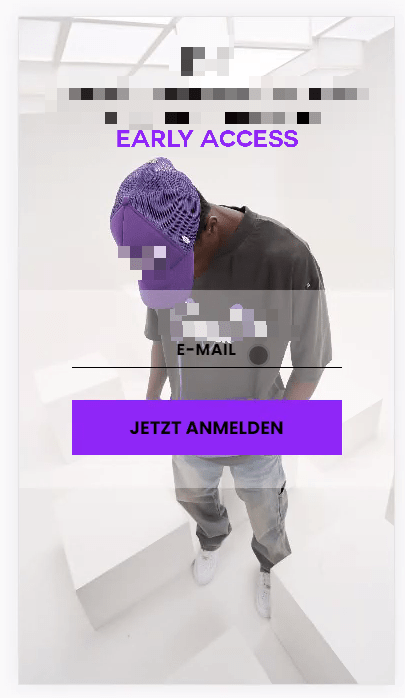
After the BFCM weekend this year, there were reports from various ecommerce owners of both successes and failures on TikTok.
But for all their success on TikTok, Maurice is impartial to the platform:
“TikTok is a completely different platform from Facebook. If you want to build a strong TikTok pipeline, you need to create a content machine. But it’s also about your location—the US market for TikTok is much bigger than that for Germany.”
Even then, even with the strong results during BFCM using the TikTok lead strategy, Maurice prefers Instagram for ecommerce.
“What works the best, still, is Instagram. The CPMs are very high, sure, and the acquisition costs eat almost the entire profit. But on a return basis, Instagram beats TikTok. On TikTok, the CPMs are low, but you need to spend a lot more money.”
Looking to the future, Maurice believes there’ll be a cooldown period over the upcoming two or three months when customers won’t be willing to buy. Strong brands, however, who’ve done the work will be able to sell, even as the global recession settles in.
Especially then, it’s the strong brands that will continue to sell—to the customers they’ve been building relationships with the entire time.
Source from Omnisend
Disclaimer: The information set forth above is provided by Omnisend independently of Alibaba.com. Alibaba.com makes no representation and warranties as to the quality and reliability of the seller and products.
